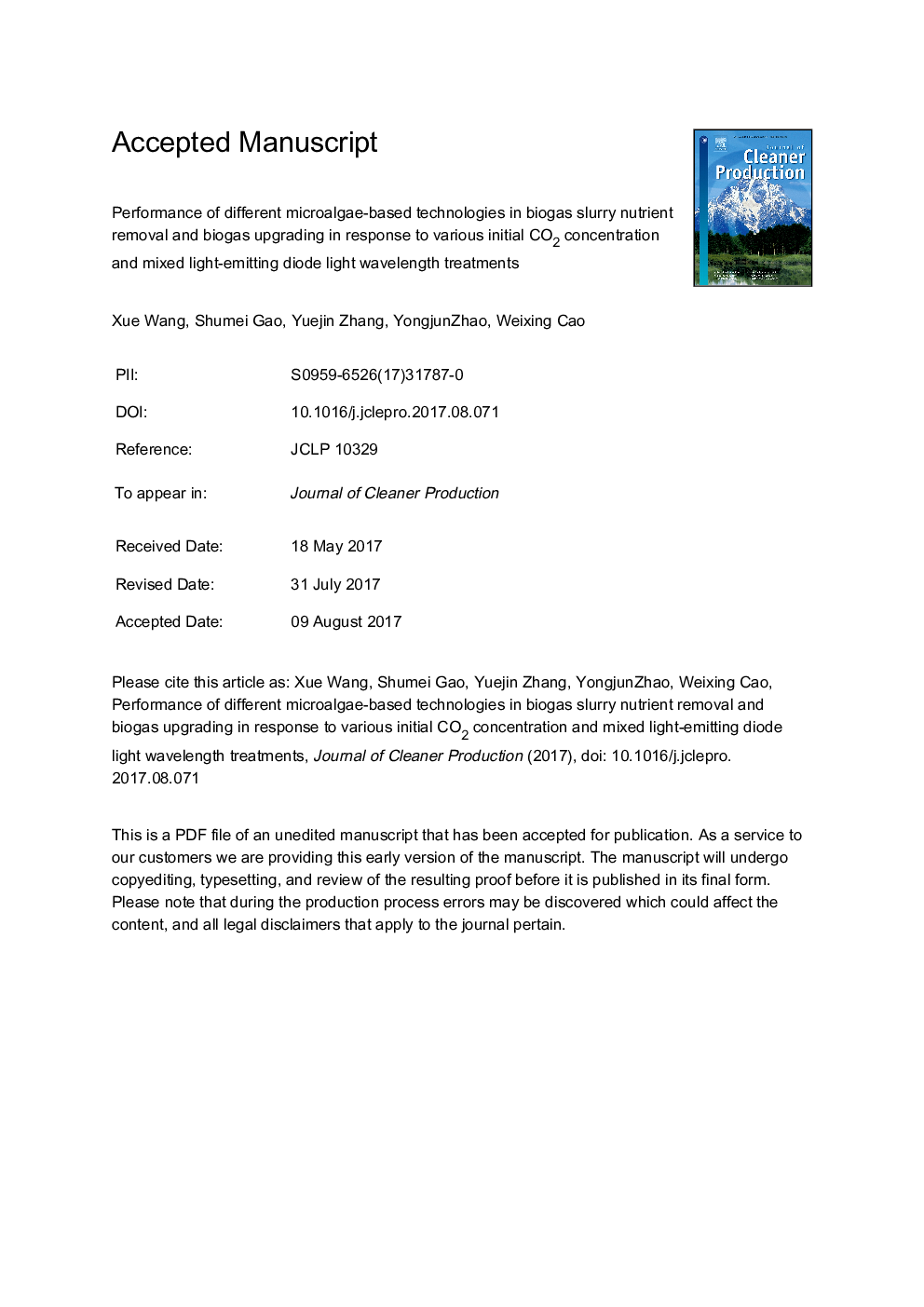| Article ID | Journal | Published Year | Pages | File Type |
|---|---|---|---|---|
| 5479917 | Journal of Cleaner Production | 2017 | 40 Pages |
Abstract
Microalgae-based technologies were studied for nutrient removal in biogas slurry and biogas upgrading in the photobioreactors constitute, which were cost-effective, environment-friendly alternatives to conventional physical-chemical methods. The effects of CO2 concentration on nutrient removal and biogas upgrade using Chlorella vulgaris monocultivation, Ganoderma lucidum-Chlorella vulgaris cocultivation and activated sludge-Chlorella vulgaris cocultivation were investigated. Besides, the influences of three ratios of red to blue light wavelength on nutrient removal and biogas upgrading were also investigated. The results showed that optimum biogas slurry nutrient reduction could be achieved by Ganoderma lucidum-Chlorella vulgaris cocultivation using the pelletization method. The optimal ratio of red to blue light wavelength for nutrient removal and biogas upgrading was 5:5, resulting to maximal mean removal efficiencies of 86.08± 6.27%, 85.69± 6.34%, 86.17± 6.13%, and 79.11 ± 5.97% for chemical oxygen demand, total nitrogen, total phosphorus and CO2, respectively. The results will provide a reference for simultaneously purifying wastewater and upgrading biogas using microalgae-based technology.
Related Topics
Physical Sciences and Engineering
Energy
Renewable Energy, Sustainability and the Environment
Authors
Xue Wang, Shumei Gao, Yuejin Zhang, Yongjun Zhao, Weixing Cao,
